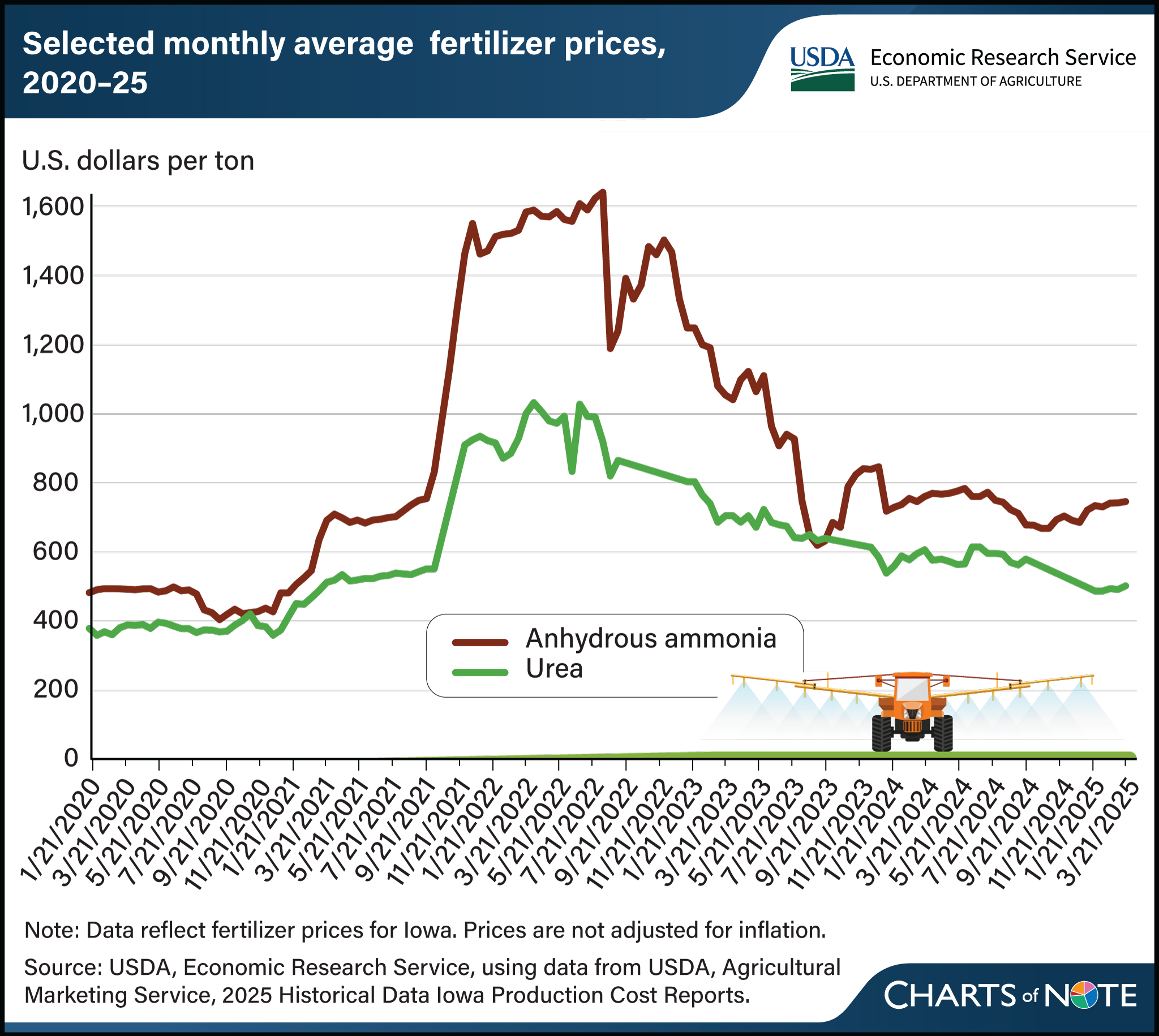Fertilizer prices stable at onset of 2025 planting season, below highs of 2021 and 2022
- by Amy Boline
- 3/27/2025

With the spring crop planting season approaching, farmers are closely monitoring nitrogen fertilizer prices, which have been volatile in recent years. Fertilizer is a critical input for production of most field crops, impacting crop yields and profitability. Since 2020, fertilizer constituted 33 to 44 percent of corn operating costs and 34 to 45 percent of wheat operating costs, according to USDA, Economic Research Service’s (ERS) Commodity Costs and Returns data. Prices for nitrogen fertilizers, anhydrous ammonia and urea, were relatively steady in 2020 but began rising sharply in 2021, reaching record highs in 2022. Anhydrous ammonia peaked above $1,600 per ton, while urea surpassed $1,000 per ton in 2022. Following their 2022 peak, fertilizer prices trended downward throughout 2023 and into 2024, though they remained above pre-2021 levels. As of early 2025, prices appear to have somewhat stabilized but are still subject to market changes resulting from shifts in fertilizer supply, demand, and trade conditions. ERS estimates costs per acre for all fertilizers used, including nitrogen, phosphate, potash, and sulfur. For more information, see the ERS Commodity Costs and Returns data product. Also see the ERS report, Estimating the USDA, Economic Research Service Commodity Costs and Returns and the Milk Cost of Production Estimates Data Series.

